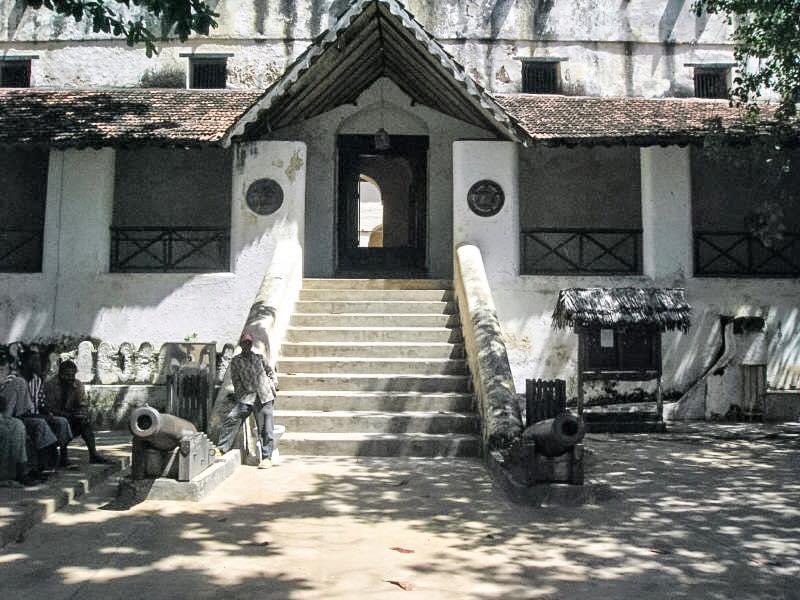Alami is a fascinating site, steeped in rich history and cultural significance. Often overshadowed by its later fortifications, the story of Alami before it became a fort is one of evolution and adaptation. In this blog post, we’ll journey back in time to uncover the origins of Alami, exploring how this location transitioned from humble beginnings to a strategic stronghold. So, grab a cup of tea, and let’s dive into the past together!
The Origins of Alami

The story of Alami can be traced back to ancient times when it was first settled by local tribes. These early inhabitants established a community that was deeply connected to the surrounding landscape. The strategic location of Alami made it an ideal spot for settlement, as it was nestled near vital water sources and trade routes.
Over the years, the area became a melting pot of cultures, influenced by various groups that passed through or settled in the region. The following points highlight some key aspects of Alami’s early origins:
- Geographical Significance: Alami's location offered natural defenses and access to fertile lands, attracting farming communities.
- Cultural Melting Pot: The area experienced a rich blend of customs and traditions from various tribes, enriching the local culture.
- Economic Activities: Early inhabitants engaged in agriculture, trade, and craftsmanship, laying the foundation for a thriving economy.
- Spiritual Significance: The site was home to various places of worship, indicating the deep spiritual ties of its inhabitants.
As centuries passed, the settlement continued to grow, evolving through challenges and opportunities. Natural disasters, wars, and migrations shaped the community, but the resilience of its people forged a unique identity. This beginning laid the groundwork for what would later become a formidable fort, solidifying Alami's importance in regional history.
Alami's Development Through the Ages
When we delve into the rich tapestry of Alami's history, we discover a captivating tale of evolution. Originally, Alami was just a quaint settlement, nestled in a region where trade routes intermingled. Its strategic location made it a hub for commerce and cultural exchange, laying the groundwork for its development.
Over the decades, Alami transformed through various stages, each adding layers to its unique identity:
- Early Settlement Period: The earliest inhabitants engaged in agriculture and local crafts. Their interactions with nearby settlements threw open the doors to trade, sparking the beginnings of a bustling economy.
- Medieval Flourishing: As trade expanded, Alami witnessed an influx of cultures, contributing to architectural advancements and the establishment of markets. The town became renowned for its skilled artisans and vibrant community life.
- Military Significance: With the emergence of external threats, Alami saw the construction of fortifications, marking its transition from a commercial hub to a fortified stronghold. This was crucial in ensuring the safety of its inhabitants and their livelihoods.
- Colonial Influences: The colonial era brought about new governance and infrastructure, transforming Alami further. New roads, schools, and hospitals emerged, integrating modern elements while retaining its historic charm.
Each era left an indelible mark on Alami. Today, we see remnants of its vibrant past interwoven with the modern fabric of life, a testament to how time shapes a locale.
Cultural Significance of Alami
The cultural significance of Alami is profound, as it is not just a geographical location but a melting pot of traditions, beliefs, and practices. Throughout its evolution, Alami has nurtured a diverse array of cultural expressions, showcasing its rich heritage.
Let’s explore some key aspects of Alami’s cultural significance:
| Aspect | Details |
|---|---|
| Architectural Heritage | Alami boasts stunning architecture that tells stories of its past. From ancient structures reflecting local styles to colonial influences, each building stands as a piece of history. |
| Festivals and Traditions | Diverse festivals reflective of various cultures highlight Alami’s vibrant community life. Events such as traditional dances and art fairs create a lively atmosphere, fostering unity among locals. |
| Culinary Diversity | The culinary offerings in Alami offer a delightful fusion of flavors, showcasing local ingredients and traditional recipes. Food plays a central role in communal gatherings, enhancing social bonds. |
In essence, Alami is a cultural jewel, embodying the richness of its history and the resilience of its people. As we look towards the future, it remains crucial to preserve and celebrate its unique cultural landscape, ensuring its stories continue to be shared for generations to come.
Transformation into a Fort
The transformation of Alami into a fort is a captivating chapter in its history that speaks to the demands of protection and power during turbulent times. Originally, Alami was established as a small settlement, home to a thriving community that engaged in agriculture and trade. However, as regional tensions grew and threats from rival factions loomed, the need for defense became paramount.
In the early stages of its fortification, the community leaders recognized the importance of a stronghold not only for safety but also as a symbol of resilience. Here’s a glimpse into the steps taken that marked this significant transformation:
- Strategic Location: Alami was positioned on elevated terrain, making it an ideal spot for surveillance and defense against invaders.
- Construction of Walls: Thick, sturdy walls were constructed using locally sourced materials, designed to withstand attacks and provide safe refuge for the inhabitants.
- Watchtowers: The integration of watchtowers enabled sentinels to keep a vigilant eye on the surrounding areas, ensuring quick responses to any threats.
- Community Defense: The townsfolk pooled resources and trained in basic combat skills, creating a united front to protect their home.
The fortification of Alami was completed over several years and transformed it from a peaceful settlement into a well-guarded fortress. This transformation not only fortified its defenses but also solidified the community’s identity, fostering a sense of pride and belonging.
Historical Events at Alami
Alami's history is rich with events that shaped not only its identity but also the broader region. Its strategic importance as a fortified settlement means that many significant historical moments occurred behind its walls. Here are some of those key events that stand out:
- The Great Siege of Alami: This pivotal event saw rival clans attempting to capture the fort. The bravery of Alami’s defenders is still celebrated today, marking a legacy of courage and unity.
- Trade Routes and Alliances: Alami became a hub for trade, fostering alliances with neighboring towns, which were crucial for economic stability. Historical records show numerous agreements made in the fort's shadow.
- Political Assemblies: The fort was not only a center for defense but also a venue for political negotiations. Significant treaties were forged within its walls, impacting the region's power dynamics.
- Cultural Festivals: Even during times of strife, the community held festivals that celebrated their heritage, fostering unity and resilience amidst external pressures.
The events that unfolded at Alami serve as a testament to the strength of its inhabitants and their dedication to safeguarding their homes. Each incident contributed layers to the fort's narrative, making it a historical cornerstone in the region.
Exploring the History of Alami Before It Became a Fort
The region known as Alami has a rich and diverse history that stretches back millennia, long before it acquired its military significance as a fort. Rooted in an array of cultures and civilizations, Alami has been a vibrant hub of trade, culture, and community.
In ancient times, Alami was primarily a settlement rich in natural resources. Its geographical location made it a strategic point for early trade routes connecting various regions. As the years progressed, it became a melting pot of diverse cultures and traditions.
Key Historical Events Leading to Fortification
- Early Settlements: Archaeological evidence suggests that Alami was inhabited as early as the 3rd millennium BCE. These early inhabitants were primarily farmers and traders.
- Trade Hub: By the 1st millennium BCE, Alami had established itself as a vital trade center. Goods such as spices, textiles, and minerals flowed through the region.
- Cultural Interactions: The settlement attracted various groups, including merchants from distant lands. This led to a rich exchange of ideas, languages, and traditions.
- Threats and Expansion: As rival civilizations began to threaten its prosperity, the inhabitants of Alami recognized the need for protection, which eventually paved the way for the construction of fortifications.
Significant Features of Alami Pre-Fortification
| Feature | Description |
|---|---|
| Trade Routes | Crisscrossing paths that facilitated commerce. |
| Cultural Diversity | Inhabitants from various backgrounds coexisting. |
| Natural Resources | Abundant in flora, fauna, and minerals. |
The transition of Alami from a peaceful settlement to a fortified area reflects the complex interplay of commerce, culture, and conflict, marking an important chapter in its storied past.
In conclusion, understanding the history of Alami before it became a fort reveals the intricate layers of human civilization, showcasing how geography, trade, and cultural interactions can shape a community's evolution over time.
 admin
admin








